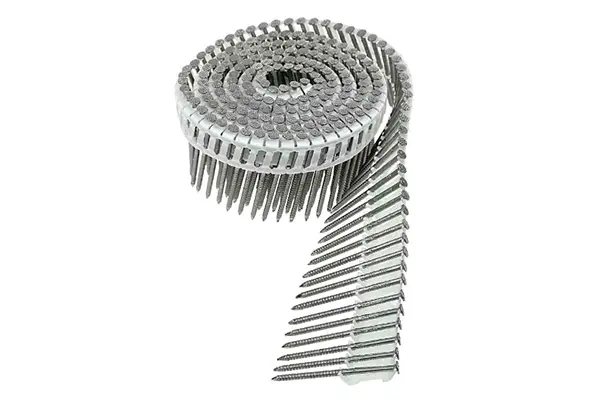In the realm of construction and woodworking, nails serve as indispensable tools, providing a secure and reliable means of fastening materials together. Among the vast array of nails available, galvanized nails stand out as a popular and versatile choice, offering a combination of strength, corrosion resistance, and affordability.
Unveiling the Anatomy of Galvanized Nails
Galvanized nails are essentially steel nails that have been coated with a protective layer of zinc. This zinc coating serves as a barrier against rust and corrosion, extending the lifespan of the nails and making them suitable for outdoor applications or use in moisture-prone environments. The galvanization process involves dipping the steel nails into a molten zinc bath, resulting in a uniform and adherent zinc layer.
Delving into the Advantages of Galvanized Nails
The key advantages of galvanized nails include:
Corrosion Resistance: The zinc coating effectively protects the steel core from rust and corrosion, making galvanized nails ideal for exterior construction and applications exposed to moisture.
Durability: Galvanized nails offer exceptional strength and durability, ensuring a firm and long-lasting hold in various construction projects.
Versatility: These nails can be used with a wide range of materials, including wood, metal, and masonry, making them a versatile choice for various construction tasks.
Affordability: Compared to other corrosion-resistant fasteners, such as stainless steel nails, galvanized nails are more cost-effective, offering a balance of performance and value.

Applications of Galvanized Nails
Galvanized nails find their way into a diverse range of applications, including:
Roofing: Galvanized nails are commonly used for securing roofing materials, such as asphalt shingles, metal panels, and slate tiles, due to their resistance to moisture and harsh weather conditions.
Framing: In wood framing, galvanized nails are employed to connect structural members, such as studs, joists, and plates, ensuring a strong and durable framework for buildings.
Decking: For constructing decks and outdoor walkways, galvanized nails are preferred due to their ability to withstand moisture and prevent rusting, maintaining the integrity of the deck structure.
Fencing: Galvanized nails are widely used for attaching fencing panels to posts and rails, ensuring a secure and long-lasting fence that can withstand outdoor elements.
Trim and Siding: Galvanized nails are suitable for fastening trim and siding materials to exterior walls, protecting them from corrosion and ensuring a clean, finished appearance.
Selecting the Right Galvanized Nails for Your Project
When choosing galvanized nails for your project, consider the following factors:
Nail Size: Select the appropriate nail length based on the thickness of the materials being joined and the desired penetration depth.
Nail Head Style: Decide between round or flat head nails based on your personal preference and the aesthetic requirements of your project.
Nail Shank Diameter: Choose the shank diameter that matches the size of your nail gun and the thickness of the materials being fastened.
Galvanization Coating Thickness: For harsher environments or extended exposure to moisture, consider nails with a thicker zinc coating for enhanced corrosion resistance.
Tips for Using Galvanized Nails Effectively
Pre-drilling: For hard or dense materials, pre-drilling pilot holes can make the installation process easier and prevent splitting of the material.
Proper Nail Placement: Drive nails into the center of the material, ensuring they are flush with the surface to avoid creating tripping hazards or water pockets.
Overdriving: Avoid overdriving nails, as this can damage the material and compromise the integrity of the joint.
Storage: Store unused nails in a dry, cool place to prevent rust or damage.
Conclusion
Galvanized nails have earned their place as a staple in the construction and woodworking industries, offering a combination of strength, corrosion resistance, versatility, and affordability. By carefully selecting the appropriate nail type and following proper installation techniques, you can ensure a secure, long-lasting, and aesthetically pleasing outcome in your construction projects.
Post time: 7月-09-2024
